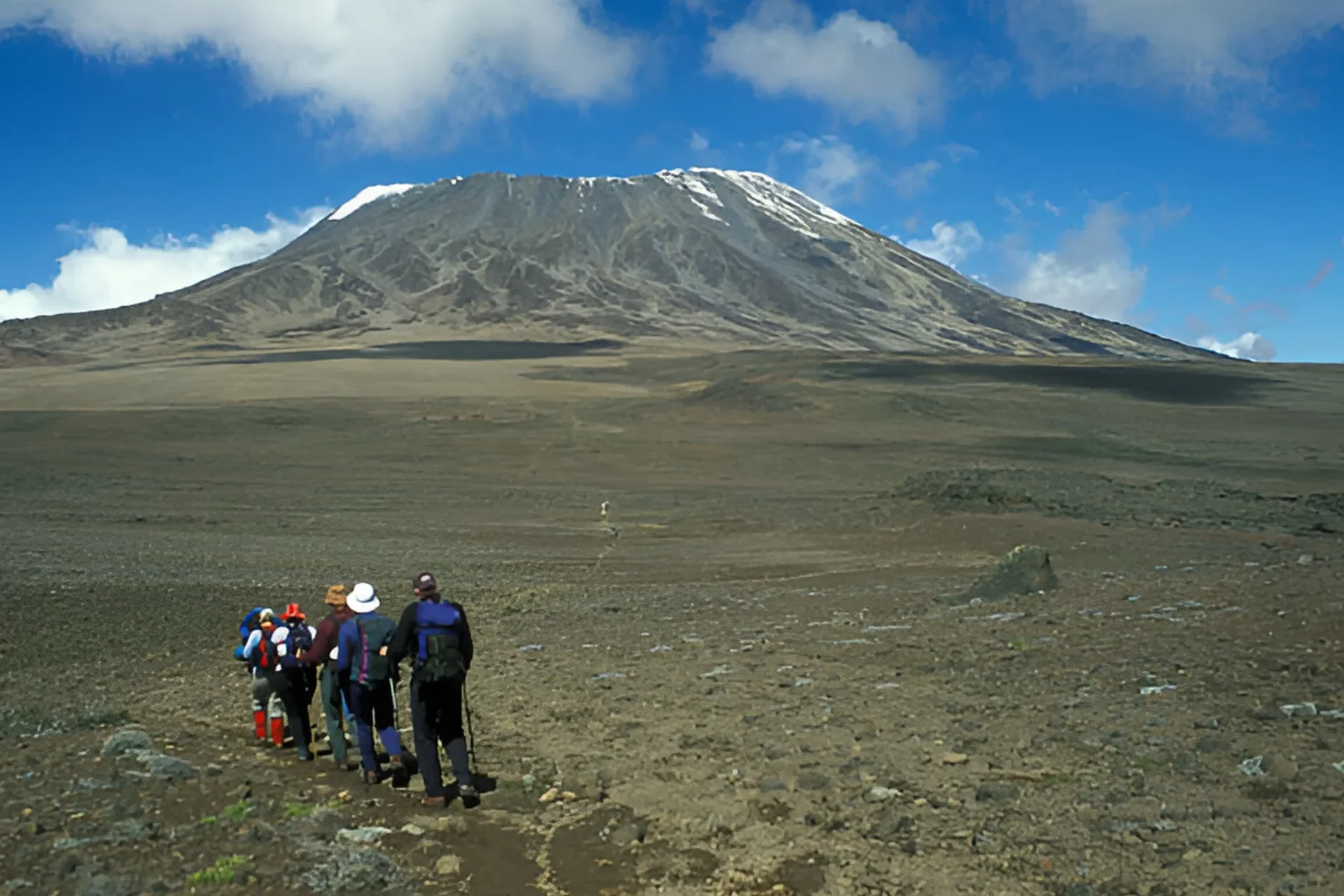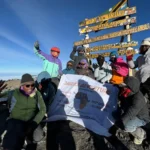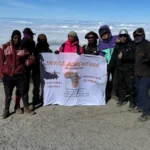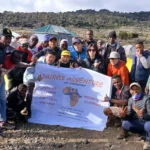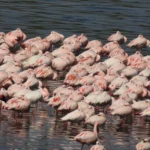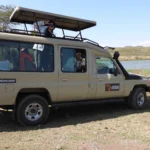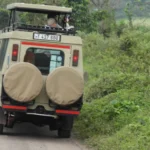RONGAI ROUTE KILIMANJARO
Rongai is a route to Mount Kilimanjaro from the north-eastern side of the mountain along the border of Tanzania and Kenya. The rongai route boasts its feeling of unspoiled wilderness. The Rongai route is really the only route in Kilimanjaro that approaches the mountain from the north. This route is truly one of the more remote and wild trails that exist in all of the mountain. However, despite this, it's a route that offers trekkers a great deal of advantages, thereby making it a very attractive option to those looking for something unique in their climbing endeavors on Africa's tallest peak.
Because it's so remote and infrequently trod, the Rongai Route is one of the least visited of all the trails on Mount Kilimanjaro. Those who brave such adventurousness will find a significant portion of the trail marked by isolation and aloneness with regards to other climbers until reaching Kibo Camp, at which point the climbers will be forced into a merge with the Marangu Trail for the last push toward the summit. However, that is some distant future away, and travelers tend to have the way to themselves for hours on end or sometimes even days at a stretch, making it ideal for the seekers of solitude in wonderfully exotic wilderness backdrops. The Rongai route approaches Mount Kilimanjaro by a gradual slope and a slow steady climb thus providing the hiker an opportunity to acclimatize at a constant rate. This not only makes it an easier trek against the mountain but it also considerably ups the success rate at the summit. Indeed there are big challenges in this trail, with only a short day just before the summit day that provides trekkers an opportunity to relax, rest and prepare for the final ascent to Uhuru Peak. The Rongai Route starts on the north side of the mountain close to the border with Kenya, making it the driest route on Kilimanjaro too.
This makes it ideal for trekking during any month of the year, especially in the rainy months of April and May. Most of the rainstorms stay on the southern side of the mountain, thus, leaving Rongai trekkers a lot drier and warmer than some of the popular trails. Another advantage of traveling by this route is that one may get to spot wildlife, such as the Colobus Monkey, in the few days at the beginning of the ascent. Campsites are nicely staggered along the route, ensuring that hikers will be spending a similar time on the trail each day. Because the trail goes up north and descends southwards, the traveler gets the opportunity to see Kilimanjaro from two different points of view.
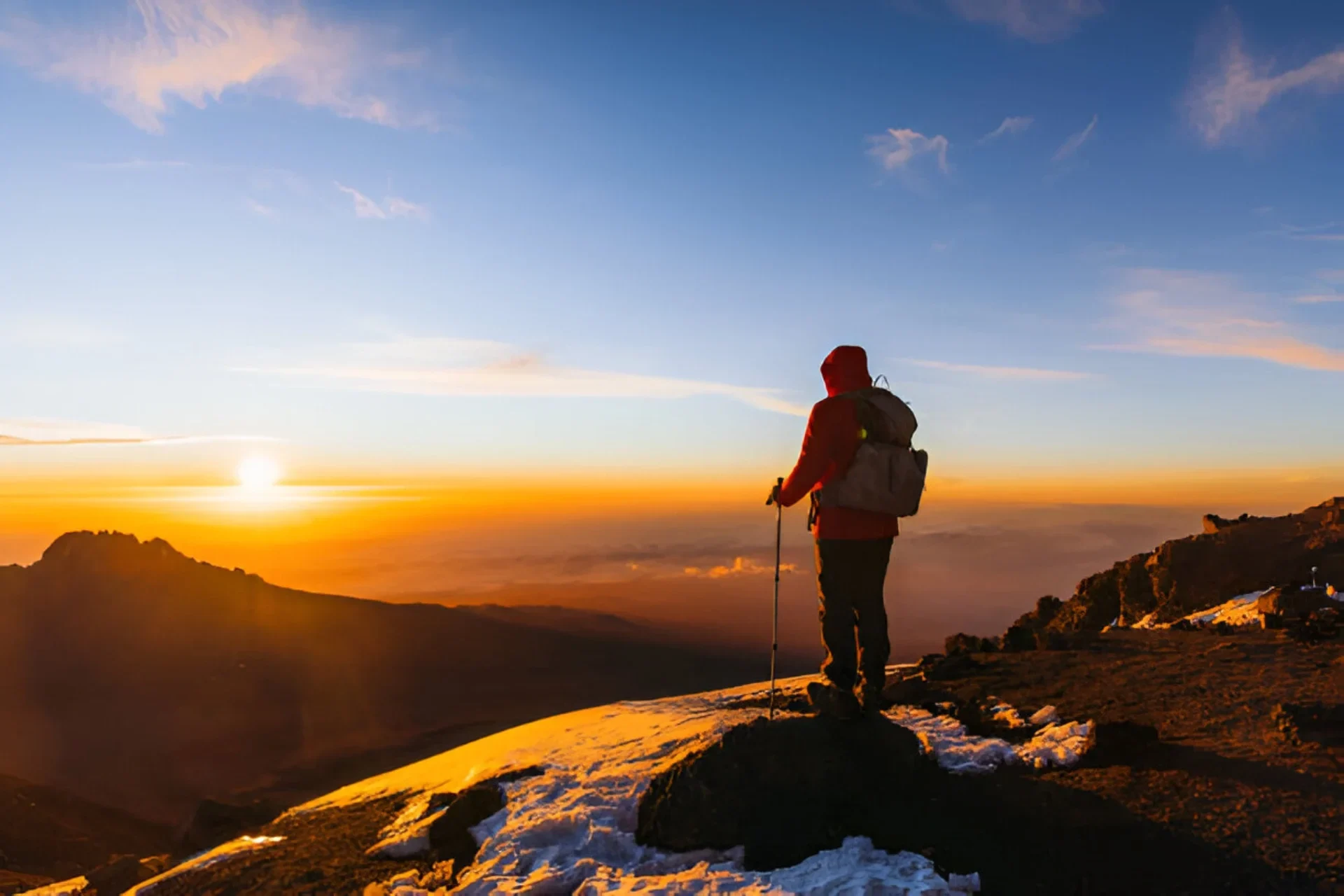
Rongai Route
The unique approach of the Rongai route to Kilimanjaro happens from the north, very near the Kenyan border. Although climbing by the Rongai route is becoming popular with climbers, it is still not an over-trafficked climbing route.
That makes Rongai the less-busy alternative to the Marangu crowds for those who want a less-traveled hike and those who will climb during the wet months (little rain falls on the north side).
The bare minimum that one can spend on this route is six days, while the recommended one is seven days. The scenery isn’t as magnificent as in some of the western routes, but it more than compensates for those days entering real wilderness before linking up with Marangu at Kibo camp. The route descends from here via the Marangu route.
Rongai route Map
Trekking along the Rongai Route has its downside; it may not be as scenic as some other routes leading up Mt. Kilimanjaro. Make no mistake, the scenery covers a wide expanse and is quite beautiful in just about every other sense of the word, just not as varied or dramatic as found along some of the other trails. And of course, because so few people pass along this route, it’s easier to soak it all in.
We have a 7-day climb in Rongai but can also organize this as a private 6- or 7-day trek. The 6-day option has no acclimatization day on day four at Mawenzi Tarn.
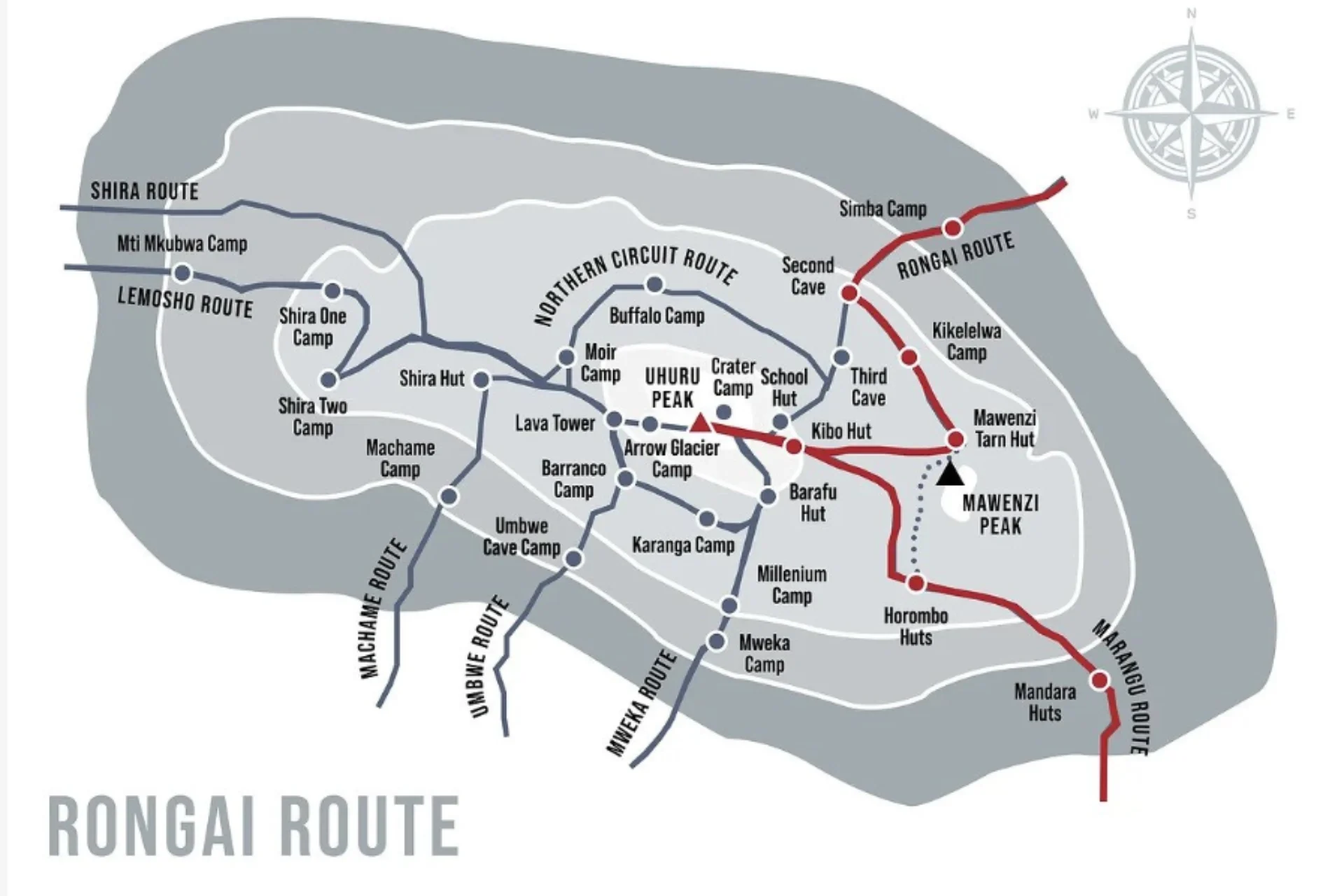
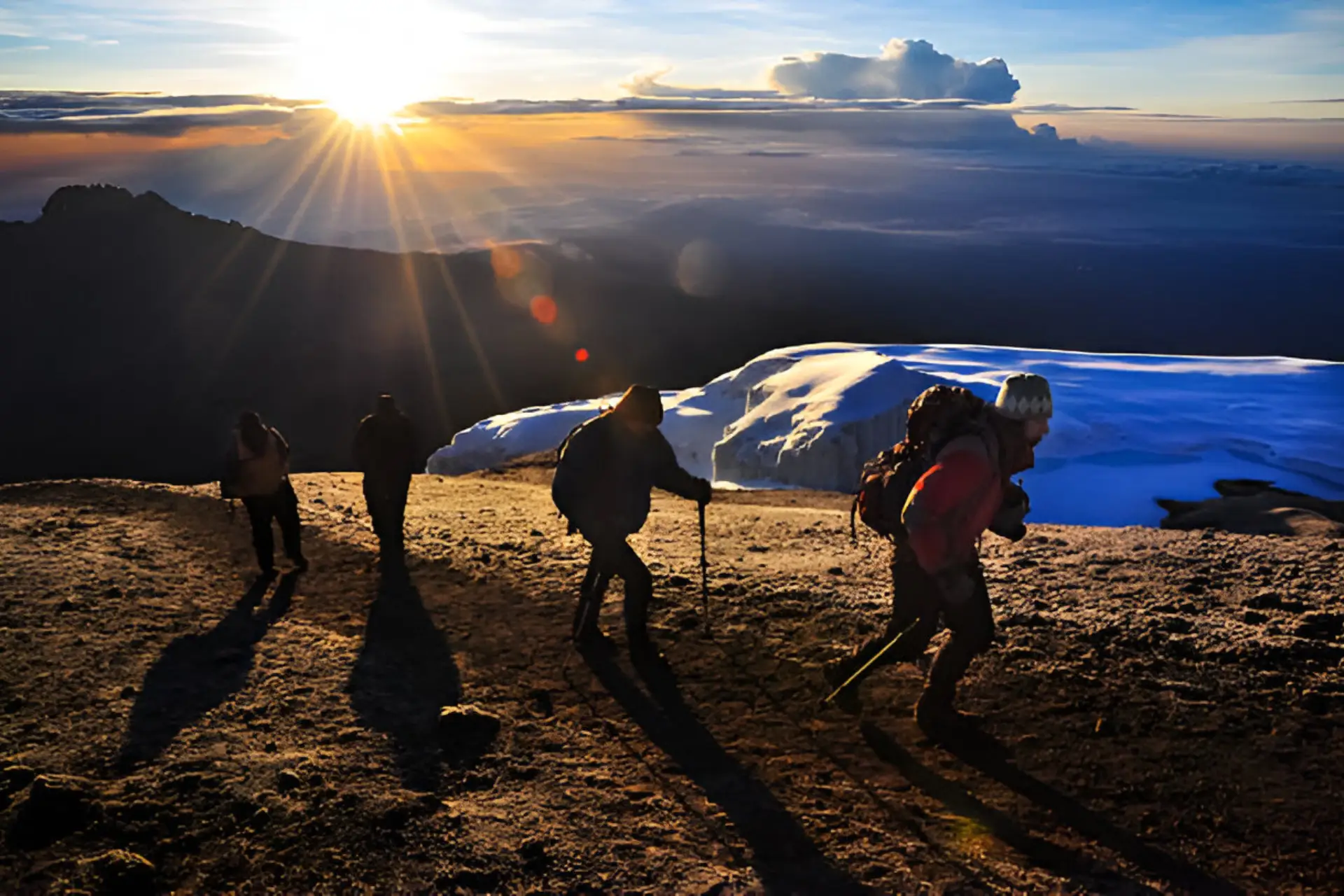
7 Days Rongai route
Rongai is one of the easiest routes with a high success rate attached to it. Starting on the north face of the mountain just south of the border, it is among the least traveled of the routes. Descend Marangu Route on the southern side of the mountain, so there are views of the mountain from many places.
The drive will take you about 3 hours of trekking through many villages and coffee plantations from Moshi while collecting the Marangu records for climbing permits. This route to the trailhead also accesses Rongai from Amboseli National Park in Kenya, about 2 hours including crossing the border. We will require copies of passports ahead of time.
6 Days Rongai route
In a rich scruffy gold prairie, which is the northern portion, Kilimanjaro is covered by its base. The epic wildlands of Masaai play host to those elephants, monkeys, and glimmering forms of much darker buffalo. Intermingled with the aerials of the colorful flocks are East Africa’s hottest birdlife flying through clear blue skies.
The more peaceful travel experience on the Rongai Route gyrates through the various climate zones. Its bright top is burned into clarity, with long spears of fine emerald piercing the snow in unusual directions. The enchanted cloud forest tempts like a beating heart-very lush, very extravagant.
Coils of mist moving above fractured canopies create that enchanted haze. Beautiful scenery is offered on the long drive to the gate of the Rongai Route, Moderate difficulty is rated for the 6-Day Rongai Route trek. In the rainy season, this trail tends to be a favored option because it has less precipitation, thereby providing a drier base for comfortable enjoyment.
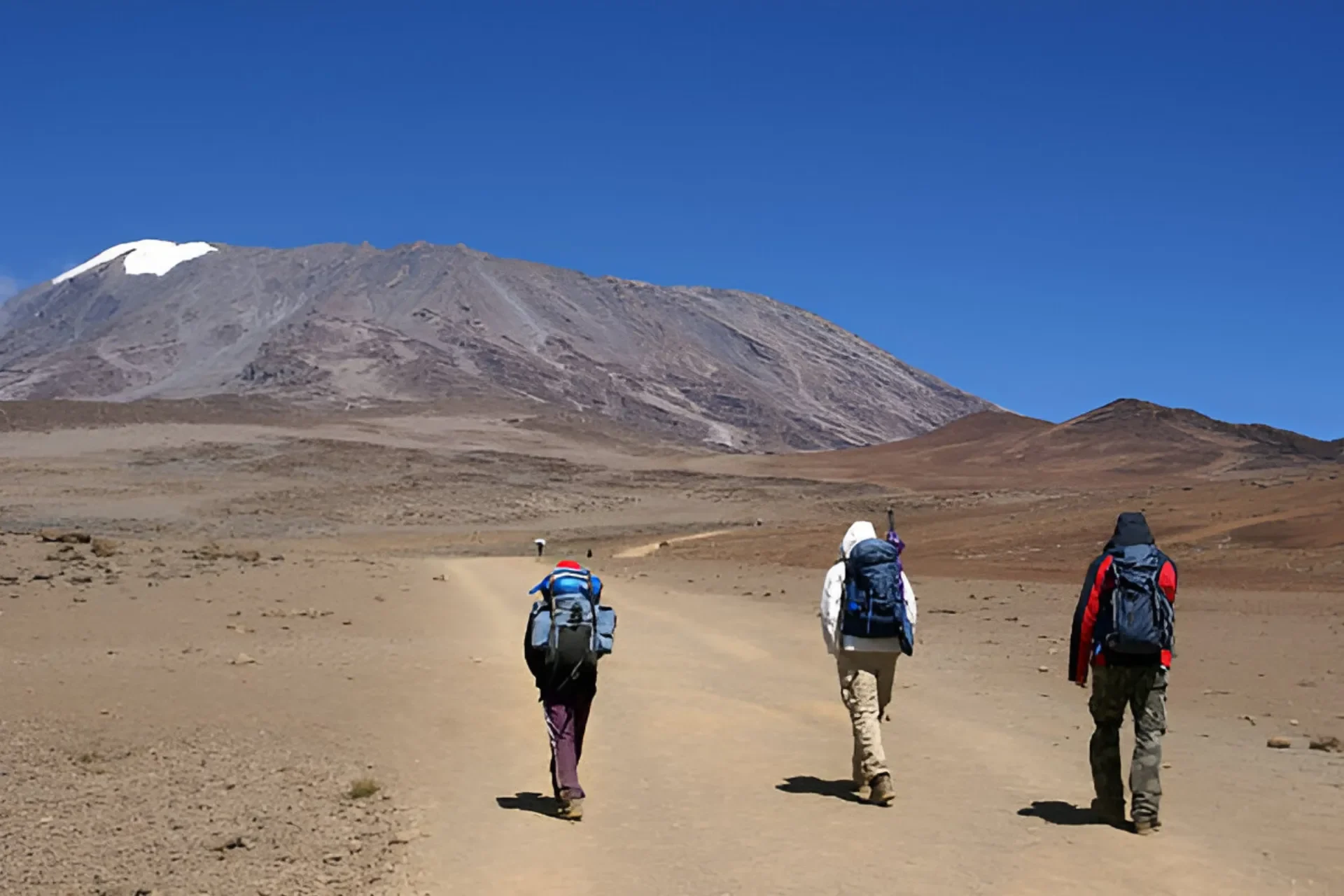
FAQ
Is Rongai Route the easiest route up Kilimanjaro?
The easiest way up Mount Kilimanjaro tends to be by the Rongai. It climbs both gradually and steadily. But the Rongai Route misses the wonderful ascend high sleep low profile, which arguably makes it harder than either the Machame or Lemosho routes. This option of a 7 days trek is strongly recommended as it allows for much better acclimatization. Though there is no technical climbing involved, a certain level of fitness is required. Read more on Training to Climb Kilimanjaro and check our Kilimanjaro Training Program page to help you prepare.
What is the distance of the Rongai Route and how many days does it take?
The specific distance for trekking along the Rongai Route is 79 kilometers or 49 miles. Six days are the least required for the Rongai Route, but when you add up the arrival and departure days, it becomes 9 or 10. However, because it is generally considered the easiest route on the mountain, it is actually better done over 7 days to increase your chances of success.
It is 79 km or 49 miles trekking distance on the Rongai Route. Shortest days needed for the Rongai Route is 6 days, but when you have included arrival and departure days, it is either 9 or 10. However, because it is regarded as the easiest route on the mountain, it is best done over 7 days to amplify your chances of success.
What is the Rongai Route Route Summit Success Rate?
Greatly, the summit success rates for the Rongai Route have the longer trek option. There are no statistics, but all the operators have an average 80% success rate for the 7-day trek and a 65% success rate for the 6-day trek. Today we have an even higher 95% summit success rate for both Rongai route treks. Read how many days you need to climb Kilimanjaro to understand why we recommend longer hikes.
What is the Scenery like on the Rongai Route Route?
The Rongai route is the only one which approaches mount Kilimanjaro from the north close to the border of Kenya-next to that, this route passes through wilderness areas where crowds are not present.
It is perhaps the only route where wildlife could be spotted during the initial days. After passing into the forested areas, one will ascend through moorlands and finally into the high alpine zones and then another ascent into the glacial zone.
When is the best time to Trek Rongai Route Route Route?
The ideal months to climb Mount Kilimanjaro from July to September are because the weather at this particular time is likely to be more stable than at any other time, making it less likely to see rain. However, it is on the Equator, and thus hardly any time of year is excluded for climbing.
Since it is the rainy season, the months of April and May should be avoided. The Rongai Route is on the northern side of Kilimanjaro and so is in a rainshadow, meaning that May and November are really good to climb as well.
The Complete Kilimanjaro Packing List
In order to be safe and comfortable throughout your Mount Kilimanjaro climb, you’ll need to bring important gear and supplies with you. We have put together a comprehensive Kilimanjaro Packing list to help you prepare for your climb. Trekking Kilimanjaro involves five main climate zones, from the warm, humid forest and lower slopes, to the bitterly cold summit zone, with glaciers, ice, and snow. You need to be prepared for all Kilimanjaro weather conditions: sunny, windy, and rainy.
We provide tents, the camp equipment, food, cooking facilities, and other shared items. You’ll have a duffel bag with all your kit, carried by the porters; and carry your own daypack during the trekking day.
Download your printable Kilimanjaro packing checklist here
Climbing Kilimanjaro Information
Mount Kilimanjaro climbing is one of the ultimate accomplishments for both first-time and experienced climbers. Kilimanjaro has a range of different climates and you need to be equipped so that you are comfortable at the different altitudes.
As you ascend, Kilimanjaro weather gradually changes and gets colder and the increasingly thinner air can bring about altitude sickness. Altitude sickness is caused by the failure of the body to adapt quickly enough to the reduced level of oxygen in the air as one gains altitude.
While climbing you may experience different symptoms of mild altitude sickness, with the most common being headaches, light-headedness, nausea, sleeplessness loss of appetite, loss of balance, and dizziness. In most cases,se these ailments are controlled by taking painkillers such as Panadol or similar.
All climbers are advised to countercheck their body conditions, and should openly communicate with their Guides. Our experienced guides are all well trained in highly specialized First Responders Wilderness training and can spot acute mountain sickness. Unlike many operators, Jairos Adventure carries oxygen on all climbs and we perform daily health and pulse oximeter checks, which measure both your heart rate and the percentage of oxygen in your blood. We want to ensure and monitor your health and safety at all altitudes.
Except for the Marangu route where accommodation is in huts, you will be sleeping in tents every night, so it is important to have proper weather-rated sleeping bags and clothing.
The walking pace should be slow and steady. We recommend you take your time and walk slowly to give yourself the best chance of fully acclimatizing as well as reducing fatigue for the following days.
Minor altitude sickness on Kilimanjaro causes most climbers to experience a loss of appetite, however, it’s important to eat well and maintain your energy. Staying hydrated is essential drinking a minimum of 3 litres per day. We recommend reducing or eliminating your caffeine intake – as it has a diarrhetic effect which can cause dehydration.
Trekking high, and descending low is the best technique to help your body acclimatize. Our climbing itineraries have been prepared to follow this practice, giving you the best possible chance of success to reach the summit.
It is strongly recommended to not smoke or drink alcohol when climbing.
As always it’s best to seek a doctor’s advice before you travel and upon arrival at your briefing listen to your Guide’s advice. Many clients choose to take Diamox before attempting Kilimanjaro and report a noticeable increase in comfort and reduction of symptoms. This of course is an individual choice. You can easily purchase this medication at a local pharmacy for less than $5 for a week’s supply. We advise trying the medication before leaving for the climb to detect any possible adverse side effects. Numbing of fingers, cheeks, and toes is common.
Safety
It is absolutely vital that one stays well-fed during the climb particularly at times like this when the conditions do not make one want to eat or drink as much as they should. Because so many climbers face loss of appetite during altitudes, our head chef has devised special menu plans that are appetizing, healthy, and loaded with juices of energy necessary to get to the top. Meals, by default, have fresh fruits and vegetables every day. Fresh meat will be there at the beginning of the trek and on the southern route where it is possible; we resupply the team at Karanga Camp. As an extra treat after your summit ascent, we will be ready to have an “All Day Breakfast” when you return to Base Camp – just inform our cook how you’d like your eggs! And before you leave the mountain, you also get to sample some of the local Tanzanian cuisine such as Njegere and Machalari.
Food & drink
The entire day-by-day itinerary includes everything from hotel accommodation to meal basis. All pre-and-post climbing accommodation is in Moshi. We will have booked you a hotel in Arusha upon your arrival if you decide to go on safari before your climb so that your travel time gets shortened. Where you have a B&B basis, you could either purchase snacks or meals in the hotel, which can be paid in Tanzanian Shillings or many times in US Dollars. When you arrive at the hotel, take time to familiarize yourself with the layout and the procedures in case of fire, especially with your escape routes and fire exits.
Your meals will be taken in a separate mess tent where you will be able to sit comfortably, while you relax and chat with your teammates and enjoy the wholesome food that our cook has freshly prepared for you. Inside, you’ll be pleased to find a table (of course) and a proper, comfortable chair with arms. With a full 2 mmetersof headroom, even the tallest climbers will be able to stretch a bit and move about without hunching over. They are fully waterproof, and regularly withstand the worst weather Kilimanjaro has to offer. A toilet tent is provided with toilet paper.
We use only the very finest high-altitude mountain tents, Mountain Hardwear Trango 3, to ensure you stay warm, dry, and comfortable on your climb up Kilimanjaro. Keep in mind that these are mountain tents and are made for extreme conditions, so don’t expect to be walking around standing inside! The dry and dusty conditions we experience in Kilimanjaro create havoc on the zips and easily jam them. Our guides are armed with WD-40 so just ask them for assistance rather than trying to force the zip.
Accommodation
The entire day-by-day itinerary includes everything from hotel accommodation to meal basis. All pre-and-post climbing accommodation is in Moshi. We will have booked you a hotel in Arusha upon your arrival if you decide to go on safari before your climb so that your travel time gets shortened. Where you have a B&B basis, you could either purchase snacks or meals in the hotel, which can be paid in Tanzanian Shillings or many times in US Dollars. When you arrive at the hotel, take time to familiarize yourself with the layout and the procedures in case of fire, especially with your escape routes and fire exits.
Transport
Kilimanjaro National Park operates a strict limit of 20kg per porter in respect of carrying your main equipment bag. This limit also applies to your sleeping bag, even if rented from us. This is more than enough for your use while in the mountain. Your bag will be weighed before you leave the hotel to start the climb and if it is in excess you will have to take things out and leave them at the hotel. Additional porters can easily be hired but they cost $25 per day.
Luggage - Weight of Climbing Bags
This is a complete ban on all single-use plastic bags in Tanzania as of 1st June 2019. Join us in this fight against plastic by using more sustainable alternatives while coming down with your bag like packing cubes and dry bags. Passengers with carry-on luggage that include plastic bags may be required to surrender on arrival at the airport. The zip-lock bags used to carry liquids and toiletries in cabin baggage on airplanes will still be allowed, however.
Ban on Plastic Bags
Usually, climbers wanting to take on Kilimanjaro will fly to Kilimanjaro International Airport (JRO), and KLM offers a perfect flight from all the major UK airports, milling around many of the larger US international airports. However, in the UK flights leave for JRO early morning only, switching at Luchthaven Schiphol, Amsterdam’s main air hub, and arriving at JRO late that same evening.
Tradition has it that one starts all adventures on the majestic Mount Kilimanjaro from a town called Moshi. Moshi lies along the low slopes of Mount Kilimanjaro on the southern side at nearly an altitude of 1000 meters over sea level. It is only about 40 kilometers by road from Kilimanjaro International Airport and transport from there to your hotel is part of your trek. Therefore, travel is almost any time of the day or night and lasts approximately 45 minutes.
Another hotel option because it is Moshi; Moshi, however fills up quite fast during peak season and should be booked with us as early as possible. It is always wise to schedule an extra day to rest after a long flight to recharge you and your gear before going on the trek rather than starting early the next morning after your arrival.
Some climbers from the United Kingdom prefer flying into Nairobi through either Kenyan Airways or British Airways. These flights are only accessible and originate from Heathrow in London. When most climbers reach the Nairobi airport, they will usually book another flight to Kilimanjaro International Airport through Precision Air, Air Kenya, Air Tanzania, or even Ethiopian Airways.
Actually, we do not recommend flying through Nairobi because Nairobi Airport always proves to be very uncomfortable and, at times, the transfer times can be really long. It also has the tendency of being poor in baggage handling and delays in transferring luggage between flights.
Turkish Airlines, Air Emirates, and Qatar also fly into JRO now, but these flights often involve long delays and flights leaving late at night for UK travelers. However, climbers from the US usually report better service and experiences flying Turkish Airlines, Air Emirates, and Qatar, so we do recommend these flights departing from North America.
Vayama offers really good flights to East Africa, like Tanzania, Uganda, Kenya, or Zanzibar from JRO, and is a very good option if you want to spend some time in this lovely area before heading back home. Many travelers plan a holiday on the beach in exotic Zanzibar to relax after their climb. We believe that the best way to organize transport for that is by booking your return flight from Dar Es Salaam and then to Zanzibar on an internal flight, ultimately back to Dar Es Salaam for your flight home.
If you are changing or re-checking an airline at any airport on route, always leave a minimum of 3 hours between flights. This accounts for any delays on arrival, travel time across airports (this can often take longer than expected), and time to re-check baggage.
How do I get there?
At Jairos Adventures, we believe in helping our guests to make their travels greener. By 2025, all our travels will be carbon-neutral from the time our guests arrive in destination until the time we drop them off at the airport. Since we do not include flight travel in our trips, we are not including them in our offset calculations, so here is the calculator below for you to use for that purpose yourself.
Travelling Responsibly
Please read a little of our Kilimanjaro Training Guide without constraint and at whatever pace you find comfortable since it is full of important advice on how to physically prepare yourself for the climb.
Fitness and training
The Tanzanian Shilling is an isolated currency meaning that you will not be able to purchase it before you arrive. It is better if you travel with US Dollars as these are broadly acceptable. The US bills must be new (not older than 10 years), crisp, and not out-turn. If you want some local currency to buy snacks or drinks either at your hotel or on your way to the climb, we can organize and take you to an ATM or bank. Moreover, there is a currency exchange as you walk through the Baggage Collection area of the airport. However, if you want to rely on a credit or debit card for emergency funds, do not forget to tell your card issuer that you will be using it abroad, or you may find that it won’t work when you really need it.
Please keep in mind that not all hotels accept card payment, and you may need to withdraw cash from an ATM.
Budget & change
We Work with Kilimanjaro Porters Assistance Project. They recommend the following momentous tipping procedure. Just to give you some guideline figures, KPAP recommended tips for porters are 6-10 dollars per day per porter. For the other roles, we recommend $20 per day for guides, $12-15 per day for assistant guides, and $12-15 per day for cooks. This is for groups and not per climber. You will receive a copy of the recommendations as well as the estimated crew numbers for your group. Size can only be known on that day during the first day of the climb after weighing bags and equipment at the park gate. First camp will tell you the final number of crew and the position they will be on climb.
You might find it useful to know that some of the porters join the group for support during your summit attempt. This is another job the porters do to give you the best possible chance at reaching the summit. Please tip them directly for any assistance you receive. An extra tip of $20 would be our recommendation.
The last evening at the mountain will also serve as the great tipping event, where all the crew will celebrate with you. A representative from your group should say a few words of thanks, which will then be translated into Kiswahili by the lead guide.
Due to recent cases of theft on Kilimanjaro, we no longer recommend that clients carry cash with them during the climb, and so the actual tip money will be presented to you when you return to the hotel. Your group will each be supplied with a couple of envelopes in which tips can be put; there will be one envelope to be used for porters, and one separate envelope that you will be using to tip your lead guide, assistant guides and cook. A trip of three porter representatives will come to the hotel and receive the tip envelope on behalf of all porters and distribute the money themselves.

